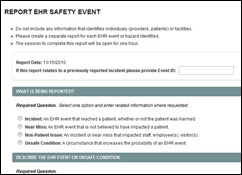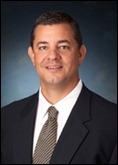News 11/16/10
iHealth Alliance, a non-profit coalition of medical societies and medical liability insurance carriers, announces the EHRevent EHR safety reporting system. Providers will be able report EHR patient safety issues to a centralized repository for analysis, including that of the FDA. EHRevent is also working directly with RECs and EHR vendors to educate physicians on the importance of event reporting. The system sounds like it has great potential — I hope it succeeds.
Texas Professional Healthcare Alliance endorses Allscripts MyWay EHR for its 250 IPA member physicians. Veridian Strategies will provide implementation and training services.
Aprima Medical Software says sales bookings for the quarter ending September 30th were up 105% over the same period last year. Aprima also grew its revenue backlog to an all-time high.
The 140-provider Marquette General Medical Group (MI) deploys Phytel’s Proactive Patient Outreach to aid in care coordination and population health management.
MedPlus says it is collaborating with multiple RECs across the country, both as a preferred EHR vendor and as an implementation and optimization organization.
If you are a physician working in a private practice, please a take a moment to participate in our new poll to your right and answer the following: which of the following do you expect to engage to help you reach Meaningful Use? Your choices include vendor, consultant, regional extension center, or internal resources.
Later this week, by the way, you will be able to read some specifics on what a dozen or so of the top ambulatory EHR companies are doing to help providers achieve Meaningful Use objectives. Our newest HIT Vendor Executives question and answers will likely publish tomorrow. Which reminds me: if you aren’t signed up for our e-mail updates, take five seconds right now to register under the Instant Update box at the top right-hand corner of this page.
Alpine Hematology Oncology (NV) chooses the Rabbit Healthcare Systems EHR/LIS/PM system for its three-provider practice.
David Blumenthal and other ONC staffers are informing specialists of the many exceptions they could claim in the Meaningful Use qualification process. Blumenthal has recently appeared at a number of functions for non-primary care physicians and is spreading the word that providers have many ways to meet Meaningful Use guidelines without having to comply with requirements that are irrelevant to their specialty. For example, when choosing “menu set” objectives, if a particular objective does apply to a provider, the provider is able to “count” that objective towards one of his or her five “met” objectives. It’s a bit confusing, but worth checking into for specialists.
Rather than pay big dollars, hospitals are looking for creative alternatives to attract physicians and buy their practices. Establishing physician networks that provide EMRs and interoperability with the hospital and other providers may often be a sufficient draw in many cases. Other physicians want influence and decision-making power around how they’re going to be managed, while some are negotiating for more flexibility in their schedules and workloads.
New term alert: Desktop medicine is a new approach to medicine, as defined by Jason Karlawish, MD of the University of Pennsylvania School of Medicine. Desktop medicine involves clinicians continuously gathering risk factor information from a patient’s medical history or EHR and combining it with clinical studies about disease risk. Based on the data gathered, risk can be assessed and a physician can provide intervention to prevent the onset of a disease, rather than treat the disease once it is fully developed. Karlawish believes the implications of desktop medicine are big and will impact how doctors ought to be educated, trained, and practice medicine.

















The article about Pediatric Associates in CA has a nugget with a potentially outsized impact: the implication that VFC vaccines…